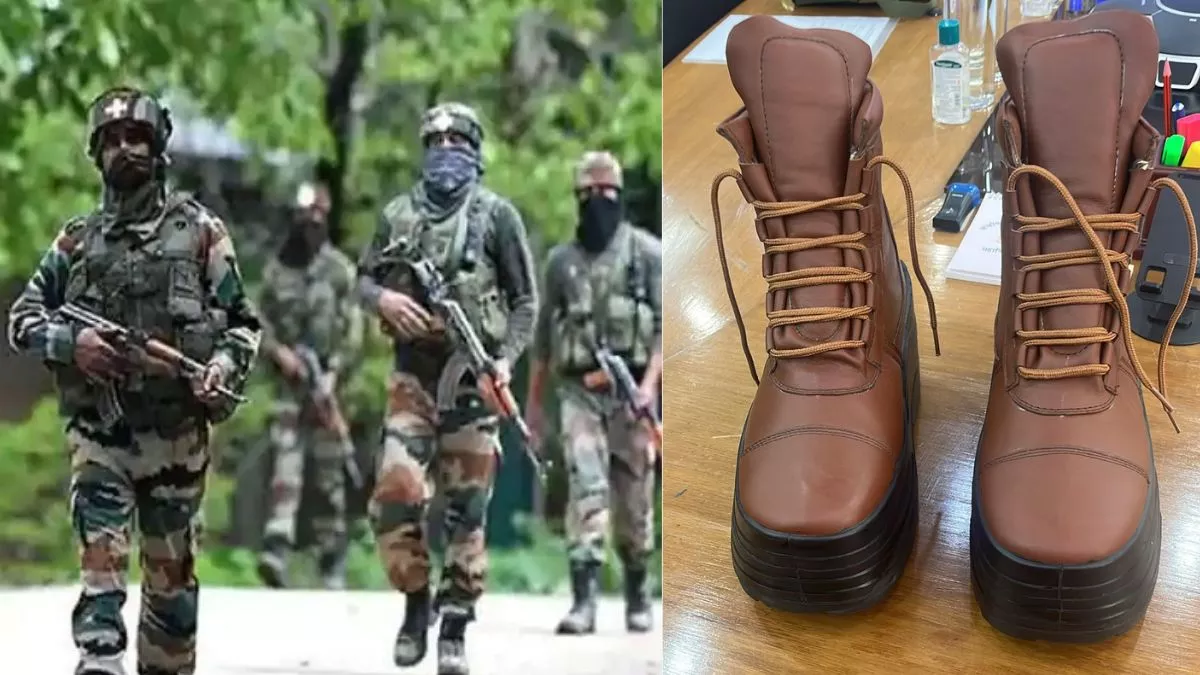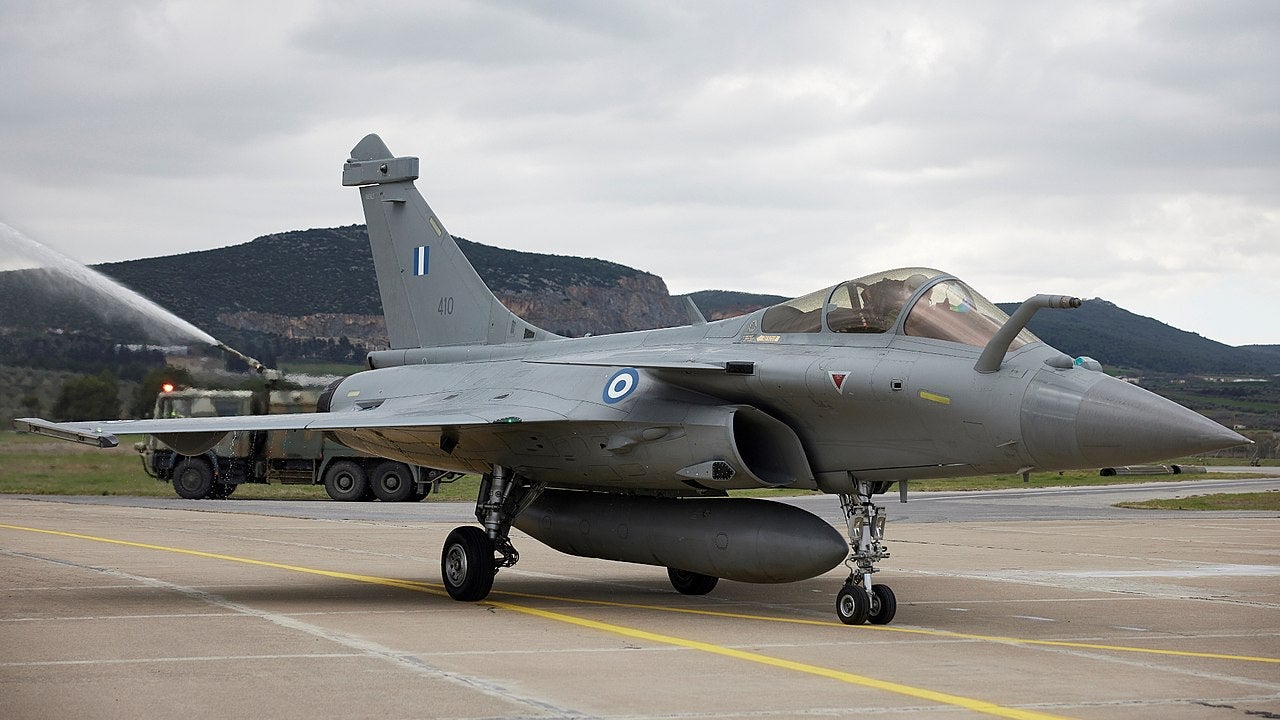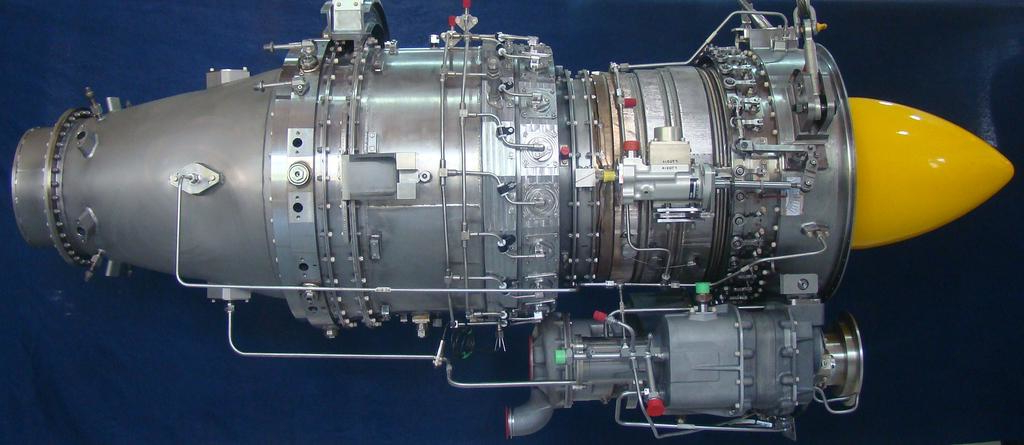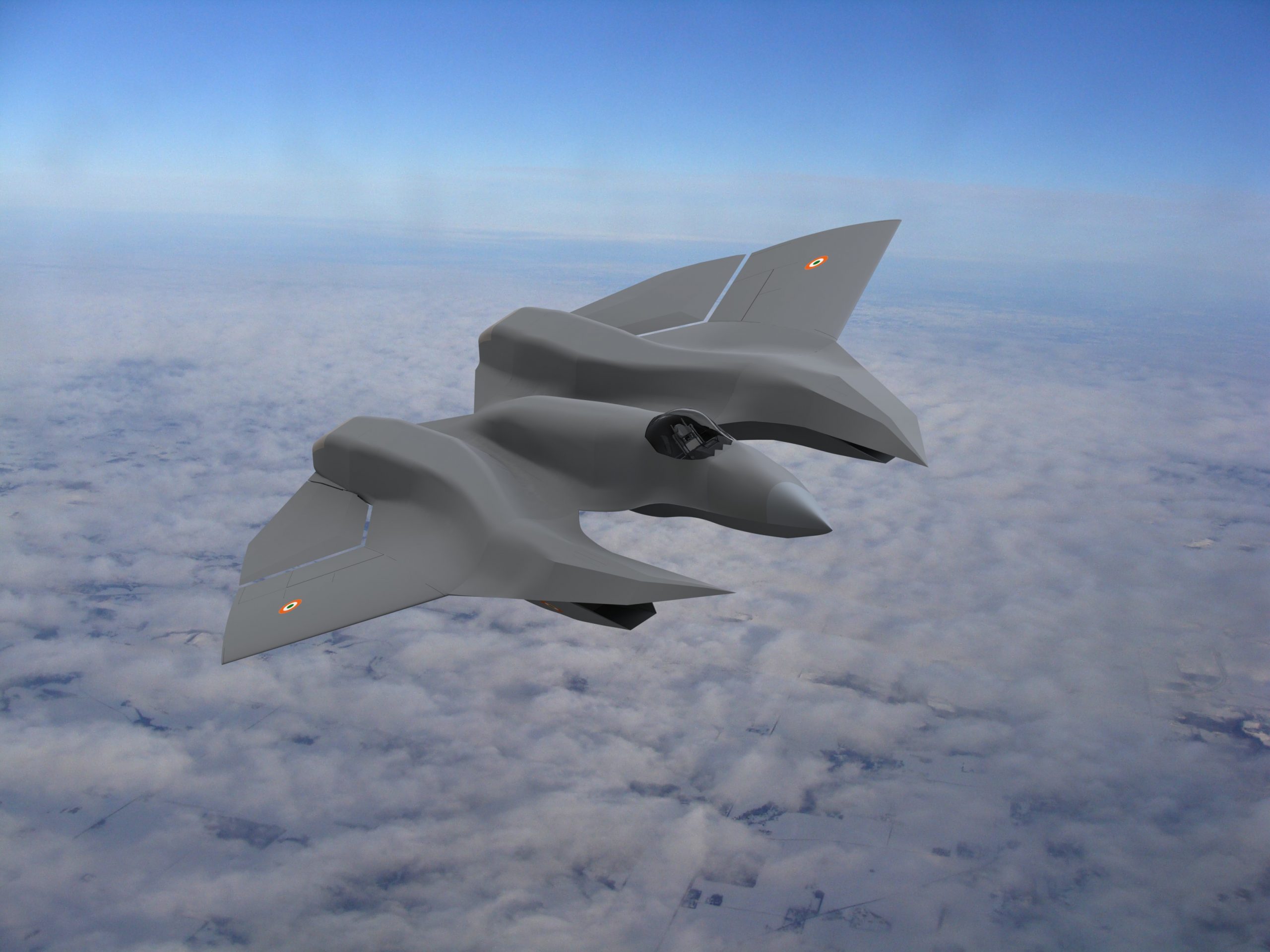Idrw Team
SOURCE: IDRW.ORG


In a groundbreaking advancement for soldier safety, the Defence Materials and Stores Research and Development Establishment (DMSRDE) in Kanpur, a unit of the Defence Research and Development Organisation (DRDO), has unveiled two specialized types of boots designed to protect India’s armed forces in some of the most perilous environments. Announced on March 28, 2025, these boots—one engineered to withstand landmine explosions and the other to shield against sharp spikes and hazards in dense forests—represent three years of rigorous research and innovation by DMSRDE scientists.
The first variant, tailored for troops operating in landmine-prone areas, is a marvel of engineering designed to counter the devastating impact of explosions. Capable of protecting soldiers from landmines with an explosive weight of up to 125 kg, these boots mitigate the extreme pressure generated during a blast—approximately 42,000 kg per square centimeter—by a factor of 160. This reduction ensures that the force transmitted to the soldier’s feet and legs is minimized, significantly enhancing survival rates and reducing injury severity.
Continue readingSOURCE: IDRW.ORG


In a move that signals deepening defense ties between Athens and New Delhi, Greece has expressed keen interest in exploring the integration of Indian technological components into its fleet of Rafale fighter jets. This potential collaboration could encompass advanced avionics, software, structural parts, and even weapon systems like the Astra missile and Smart Anti-Airfield Weapon (SAAW)—technologies already enhancing the Indian Air Force’s (IAF) Rafale fleet. With all 24 Rafale jets ordered by Greece now delivered—18 in 2021 and the remaining six in 2024—this development highlights a strategic pivot toward cost-effective, innovative solutions amid Greece’s efforts to modernize its air force.
Greece’s acquisition of the Dassault Rafale, a twin-engine, multi-role fighter renowned for its versatility, began with an inter-governmental agreement in January 2021. The Hellenic Air Force received 18 aircraft—six new Rafale C variants in the F3-R standard and 12 used F1 and F2 models from the French Air and Space Force—followed by six additional new jets delivered in 2024. This fleet strengthens Greece’s deterrence capabilities in the Eastern Mediterranean, a region marked by tensions with Turkey. However, the reliance on French-supplied weaponry, such as the high-cost Meteor Beyond Visual Range Air-to-Air Missile (BVRAAM) and the aging MICA BVRAAM with its limited range, has prompted Greece to seek alternatives that balance performance with affordability.
Continue readingSOURCE: IDRW.ORG


The Indian Institute of Technology Kharagpur (IIT Kharagpur), a premier engineering institution, is making a transformative investment in Directed Energy Deposition (DED) based additive manufacturing, a cutting-edge technology poised to redefine manufacturing processes. This strategic move promises to cultivate a new generation of material scientists whose innovations could galvanize the aerospace and medical industries. Once mastered, DED’s unique capabilities could position India as a leader in advanced manufacturing, driving breakthroughs in precision engineering and custom fabrication.
Directed Energy Deposition is an additive manufacturing technique that uses a focused energy source—typically a laser or electron beam—to melt and deposit material, layer by layer, directly onto a substrate or existing component. Unlike traditional subtractive manufacturing, which carves parts from solid blocks, or powder bed fusion methods like Selective Laser Melting (SLM), DED excels in its ability to build, repair, or clad large-scale metal structures with high precision. Materials such as titanium, aluminum, and nickel alloys, critical to aerospace and medical applications, are fed as powder or wire, melted in real-time, and fused to create complex geometries.
Continue readingSOURCE: IDRW.ORG


In a significant stride toward bolstering urban security, the Defence Research and Development Organisation (DRDO) is gearing up to deploy its indigenously developed D4 (Drone Detect, Deter, Destroy) counter-drone system at vital installations across India’s cities. Announced on March 27, 2025, this advanced solution is designed to counter the rising menace of rogue unmanned aerial vehicles (UAVs), offering a robust shield against potential drone attacks in densely populated areas.
The D4 system, a product of DRDO’s cutting-edge research, is an integrated counter-drone platform engineered to detect and neutralize rogue UAVs with precision. Capable of addressing both micro and small drones, it combines multiple technologies to ensure comprehensive protection. The system employs a “soft kill” mechanism to instantly detect and jam drone communications, disrupting their command-and-control links, and a “hard kill” laser-based mechanism to physically terminate targets at ranges of up to 3 kilometers. This dual approach makes D4 a versatile tool against the evolving threat of unauthorized drones.
Continue readingSOURCE: IDRW.ORG


The Indian Air Force’s (IAF) Air Force Station Naliya, located in the coastal town of Naliya in Gujarat, India, is set to become a key hub for India’s indigenous fighter jet program as it prepares to host the first squadron of the advanced Tejas Mk1A.
Situated approximately 90 kilometers from the strategically sensitive Sir Creek along the Pakistan border, this airbase has already seen the deployment of the older Tejas Mk1 jets in their Final Operational Clearance (FOC) configuration. Now, it is transitioning from its legacy MiG-21Bis fleet to the cutting-edge Tejas Mk1A, marking a significant step in the IAF’s modernization journey and India’s push for self-reliance in defense.
Continue readingSOURCE: IDRW.ORG


The Indian Air Force (IAF) has received a significant boost in its quest to enhance airborne surveillance capabilities, with recent clearance to procure six Embraer EMB-145 aircraft for the Netra Mk1A program. This approval, anticipated to be formalized soon by the Defence Acquisition Council (DAC), marks a critical step in modernizing the IAF’s Airborne Early Warning and Control (AEW&C) fleet. With production of the EMB-145 having ceased years ago, Brazilian aerospace giant Embraer, the aircraft’s original manufacturer, will now scout the secondary market for operational units, partnering with India’s Adani Defence and Aerospace to bring the Netra Mk1A vision to fruition.
The Netra Mk1A is an advanced iteration of the existing Netra AEW&C system, which is built on the EMB-145 platform and equipped with indigenous radar technology developed by the Centre for Airborne Systems (CABS) under the Defence Research and Development Organisation (DRDO). The IAF currently operates three Netra systems, providing 240-degree radar coverage with a range of approximately 450 kilometers. The Mk1A variant promises enhanced operational capabilities, including upgraded mission suites and minor equipment modifications, to meet evolving threats along India’s borders with China and Pakistan. The addition of six more aircraft will nearly triple the IAF’s AEW&C capacity, addressing a shortage felt acutely during the 2019 Balakot aerial engagement.
Continue readingSOURCE: IDRW.ORG


The Indian Air Force (IAF) has initiated a proposal to develop a Part Task Trainer (PTT) for its Mirage 2000 aircraft, a critical asset in its fighter fleet, to enhance pilot training and operational readiness. The IAF’s requirement focuses on creating a high-fidelity training system that replicates the Mirage 2000’s cockpit environment, allowing pilots to practice basic flying, simulate various modes of operation, and familiarize themselves with the aircraft’s controls and displays in a controlled, cost-effective setting. This move underscores the IAF’s commitment to leveraging advanced simulation technology to maintain the proficiency of its pilots, particularly as the Mirage 2000 continues to play a pivotal role in India’s air defense strategy.
The IAF’s proposal for the Part Task Trainer emphasizes the need for an accurate replica of the Mirage 2000’s cockpit, with a particular focus on the stick and throttle, which are critical for simulating the aircraft’s handling characteristics. The trainer will also feature Multifunctional Displays (MFDs), Head-Up Displays (HUDs), and other cockpit displays, which will be replicated using modern LCD, TFT, or OLED display panels with touch-screen functionality. This approach allows for a cost-effective yet realistic simulation of the Mirage 2000’s avionics, enabling pilots to interact with the displays as they would in the actual aircraft.
Continue readingSOURCE: IDRW.ORG


In a significant boost to India’s defense manufacturing capabilities, Bharat Forge Limited (BFL) has operationalized a massive new facility in Jejuri, near Pune, dedicated to the production of advanced indigenous artillery systems. The state-of-the-art 3 lakh sq. ft. plant, inaugurated on April 2, 2025, is set to become a cornerstone in India’s journey toward self-reliance in defense production, aligning with the government’s Aatmanirbhar Bharat initiative.
The facility will primarily focus on fulfilling orders from India’s Ministry of Defence (MoD) for the indigenously developed Advanced Towed Artillery Gun Systems (ATAGS), a cutting-edge 155mm howitzer designed to enhance the Indian Army’s artillery firepower and safeguard the nation’s vast borders.
Continue readingSOURCE: IDRW.ORG


In a significant stride toward bolstering its naval deterrence, the Indian Navy is poised to leverage a newly completed submarine manufacturing complex dedicated to producing the next-generation S5-class nuclear-powered ballistic missile submarines (SSBNs). Satellite imagery and recent reports indicate that this state-of-the-art facility, located near the Cochin Shipyard, is now ready to commence production of the S5-class SSBNs, which are set to redefine India’s underwater strategic capabilities with their massive 13,000-ton submerged displacement. This development, as of April 1, 2025, marks a pivotal moment in India’s quest for a credible sea-based nuclear deterrent, aligning with its broader #AatmanirbharBharat initiative to achieve self-reliance in defence manufacturing.
The new complex, stretching over 600 meters, is designed to handle the simultaneous construction of three S5-class submarines before they are moved to an outer dry dock for final assembly. This capability underscores India’s intent to accelerate its SSBN program, ensuring a steady production pipeline to meet strategic imperatives. The S5-class submarines, with a submerged displacement of 13,000 tons, are nearly twice the size of the preceding Arihant-class SSBNs, which displace around 6,000 tons. This leap in scale allows for advanced nuclear propulsion systems, enhanced stealth features, and a larger payload of submarine-launched ballistic missiles (SLBMs), positioning the S5-class as a cornerstone of India’s nuclear triad.
Continue readingSOURCE: IDRW.ORG


In a significant development that has reverberated through India’s defense ecosystem, the Indian Armed Forces recently grounded their entire fleet of Advanced Light Helicopter (ALH) Dhruv following a series of incidents, raising serious questions about reliability and safety. As investigations deepen into the root causes, French aerospace company Safran, a key partner in the ALH program through its supply of Shakti engines, has found itself under scrutiny. This unfolding situation not only highlights concerns over the ALH-Dhruv’s operational integrity but also casts a shadow on India’s broader ambitions for self-reliance in defense manufacturing.
The ALH-Dhruv, designed and manufactured by Hindustan Aeronautics Limited (HAL), has been a flagship project of India’s indigenous defense industry since its induction in 2002. Over 300 units serve across the Indian Army, Air Force, Navy, and Coast Guard, performing roles ranging from troop transport and reconnaissance to search-and-rescue and medical evacuation. However, the helicopter has been plagued by a troubled history of accidents and technical issues, with multiple incidents prompting temporary groundings over the years.
Continue readingSOURCE: IDRW.ORG


The Hindustan Turbo Fan Engine (HTFE-25), a 25 kN thrust turbofan engine under development by Hindustan Aeronautics Limited (HAL), represents a cornerstone of India’s ambition to achieve self-reliance in aerospace propulsion technology. Designed to power a variety of platforms—including trainer jets, unmanned aerial vehicles (UAVs), light combat aircraft, and potentially regional jets—the HTFE-25 is a testament to India’s growing engineering prowess. As of March 26, 2025, the program has made notable strides, though it faces challenges that have tempered its ambitious timeline. Here’s an in-depth look at the HTFE-25, its current status, and the progress of this critical initiative.
Initiated in 2013 by HAL’s Aero Engine Research & Development Centre (AERDC) in Bengaluru, the HTFE-25 is a low-bypass, twin-spool, mixed-flow turbofan engine featuring a three-stage low-pressure (LP) compressor, a five-stage high-pressure (HP) compressor, and air-cooled, high-efficiency turbine blades. With a thrust output of 25 kN (approximately 5,620 pounds), it is versatile enough to power single-engine aircraft weighing up to 5 tonnes or twin-engine configurations up to 9 tonnes. HAL envisions its use in basic, intermediate, and advanced trainer aircraft like the HJT-36 Sitara, as well as emerging platforms such as the Combat Air Teaming System (CATS) Warrior UAV and High-Altitude Long Endurance (HALE) drones.
Continue readingSOURCE: IDRW.ORG


India’s Centre for Airborne Systems (CABS), a key laboratory under the Defence Research and Development Organisation (DRDO), is set to repurpose one of its existing Netra Airborne Early Warning and Control (AEW&C) systems as a technological demonstrator. This strategic move aims to accelerate the development of advanced indigenous radar systems for six additional Netra platforms, including the recently approved Netra Mk1A. The initiative, greenlit by the Defence Acquisition Council (DAC), marks a significant leap in India’s quest for self-reliance in airborne surveillance technology, with cutting-edge Gallium Arsenide (GaS) and Gallium Nitride (GaN)-based Active Electronically Scanned Array (AESA) radars at its core.
The Netra AEW&C, mounted on Embraer EMB-145I aircraft, has been a pioneering achievement for India’s indigenous defense ecosystem. The initial Netra Mk1, with its GaS-based AESA radar, provides 240-degree coverage and a detection range of approximately 250-300 kilometers for fighter-sized targets. Two operational Netra Mk1 systems are currently in service with the Indian Air Force (IAF), complemented by a third used for trials and development. It is this third aircraft that CABS plans to convert into a technological demonstrator, serving as a testbed for next-generation radar systems.
Continue readingSOURCE: IDRW.ORG


Chris Beskar, CEO and Chief Designer of Minnesota-based Stavatti Aerospace, is making waves with an audacious proposal: offering India the SM-39 Razor, a next-generation air dominance fighter and fighter-bomber that promises cutting-edge performance at a fraction of the cost of established competitors. Stavatti, a privately-held aviation company that has yet to produce a single aircraft, claims the SM-39 could revolutionize the warplane market—with a program cost of $3.3 billion and a unit price of $85 million. Beskar has pitched the jet not only to the U.S. Air Force (USAF) but also to multiple nations, with India emerging as a potential customer amid its ongoing quest for advanced fighter jets.
The SM-39 Razor is billed as a sixth-generation platform, blending air dominance, interception, and all-weather strike capabilities. Stavatti envisions two engine options: either dual NeoThrust™ E1400-SE-520 variable cycle afterburning turbofans, each delivering 52,434 lbs of static thrust with magnetohydrodynamic (MHD) energy bypass, or dual GEAE ACE turbofans, each producing 50,000 lbs of thrust. These powerplants promise Mach 4+ speeds, stealth features, and advanced AI integration—specifications that, if realized, would place the Razor among the world’s most formidable fighters. Yet, the company’s lack of a production track record casts a long shadow over these ambitious claims.
Continue readingSOURCE: IDRW.ORG


India’s indigenous Light Combat Aircraft (LCA) Tejas Mk-1A is nearing a critical milestone as it undergoes rigorous extra firing and electronic warfare (EW) trials to ensure it meets the Indian Air Force’s (IAF) operational standards. According to sources cited by the Indian Defence Research Wing (idrw.org), the IAF is likely to receive its first fully operational Tejas Mk-1A in the first quarter of the financial year 2025-26, potentially between late April and early May 2025.
The trials follow the Mk-1A’s maiden flight on March 28, 2024 (not February as initially misreported), when the first aircraft, designated LA-5033, took to the skies from HAL’s Bengaluru facility for an 18-minute sortie. That flight, however, utilized older Category B F-404 engines—reserve units from earlier Tejas Mk-1 production—due to delays in the supply of new GE F-404-IN20 engines. These interim engines allowed HAL to maintain testing momentum, but the aircraft’s full potential hinges on the integration of the latest powerplants.
Continue readingSOURCE: IDRW.ORG


The Indian Army is turning to private sector ingenuity to enhance the anti-drone capabilities of its T-90 Bhishma main battle tanks, a critical component of its armored fleet. With over 1,200 T-90s in service and hundreds more in production, the Army aims to integrate an autonomous anti-drone system into the tanks’ existing remotely operated 12.7 mm anti-aircraft gun (AAG), currently operated manually by the tank commander. This ambitious upgrade seeks to counter the rising threat of low-speed aerial targets, such as drones, by leveraging advanced technology to achieve 360-degree autonomous detection, recognition, and identification (DRI) of targets, alongside the development of specialized fragmentation rounds.
The T-90’s current setup includes a 12.7 mm NSV heavy machine gun mounted on the turret, remotely controlled via the commander’s TKN-4S Agat-M sight, part of the 1A45 fire control system (FCS). While this configuration, indigenized and improved by Indian firms over its Russian origins, allows the commander to observe and engage aerial threats, the process remains manual—relying on human detection, aiming, and firing. This limitation has become a liability in modern warfare, where drones and loitering munitions, as demonstrated in conflicts like Ukraine, pose a persistent and agile threat to armored units. The Army now envisions a fully autonomous solution to transform the T-90 into a drone-repelling powerhouse.
Continue reading